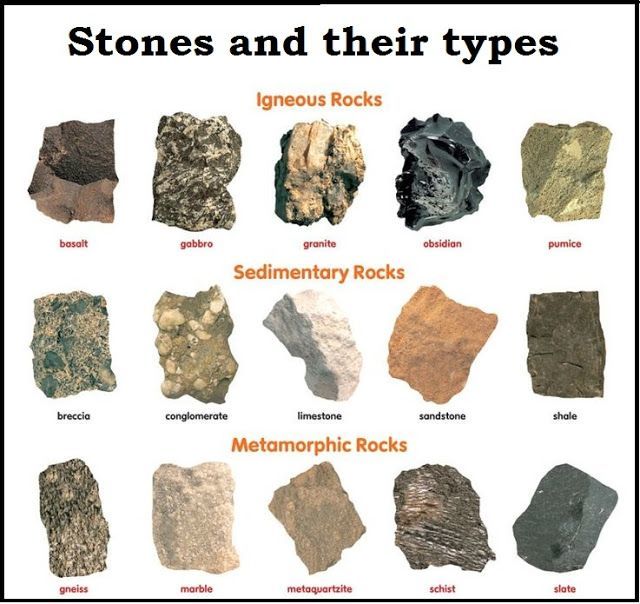This is an EarthCache, there is no physical container to search for here. Instead you will need to read the cache page and then make some observations of the memorial to answer some simple questions below. We're a friendly bunch and have set this cache with our children so we have made it clear and hopefully easy enough for all to have a go.
ChapmanGang
The Earth Science Lesson
Types of Rocks ..
Rocks are naturally occurring solid masses or aggregates of minerals, which make up the outer layer of earth, known as the earth’s crust. They are characterized and classified by their chemical composition, way of formation, grain size, texture, and the minerals they contain. There are three major types of rocks: Metamorphic, Igneous, and Sedimentary.
Metamorphic Rocks
Metamorphic rocks are the rocks formed from other rocks. They change substantially from their original form when subjected to high heat, pressure, hot mineral rich fluids or a combination of these.
Properties & Characteristics: Lightweight, glassy appearance; relatively hard, but still easy enough to break; layered or foliated structure made up of crystals of the same size.
Some Examples: Gneiss, phyllite, schist, marble, hornfels and quartzite and slate.
Igneous Rocks
Igneous rocks form when magma (molten rock) cools and crystallizes, either at volcanoes on the surface of the Earth or while the melted rock is still inside the crust.
Properties & Characteristics: Dense, hard, and crystalline; rocky streamlined flow structures with no layers; not affected by chemical corrosion.
Examples: Granite, gabbro, diorite, basalt, andesite, obsidian, pumice, rhyolite.
Sedimentary Rocks
Sedimentary rocks are formed by the accumulation of sediments, like fragments of older rocks, organic remains (shell, bones), and minerals that eventually compact and harden to rocks over a long period. Sediments accumulate in layers on earth’s surface or at the bottom of lakes, rivers and oceans. As the sediments lose water they cement and harden to create a rock.
Properties & Characteristics: Crumbles easily, can be scratched by fingernails; grainy texture due to layers of sand, silt or gravel; varying sizes of crystals.
Examples: Sandstone, conglomerate, limestone, coal and shale

Rock & War Memorials
Most war memorials are constructed or have a part of them built with rock but other common materials include metals, timber, brick and concrete. Often there will be more than one material involved. As there is an abundant and varied legacy of rock. Limestones, sandstones, slates and granites, as well as imported marbles, are all frequently found in war memorials.
What is a Fossil?
Fossils are the preserved evidence of plants and animals that once lived on Earth. Fossils can be as tiny as a grain of pollen or as huge as a dinosaur skeleton! Scientists called palaeontologists study fossils to discover what animals and plants used to live on Earth and how life has changed (or evolved) over time. Without fossils we wouldn’t know that woolly mammoths or dinosaurs ever existed!
In very simple terms two types of fossils ..
Body Fossils
Body fossils are plant and animal remains like leaves, teeth, shells and bones.

Body fossils usually form when an organism has been buried very quickly in soft sediment such as mud or sand, in a calm, watery environment like the muddy sea floor, bottom of a lake or a river estuary.
Trace Fossils
A trace fossil is a fossil that provides indirect evident evidence of plants or animals, such as footprints, trails, roots, animal nests and burrows, or even feces. The study of trace fossils is referred to as ichnology.

Trace fossils usually form as moulds or casts. A mould forms when something leaves a hollow imprint in soft sediment, like footprints on wet sand. A cast forms when a solid mould is filled in with sediment, creating a 3D impression of the original object

To claim this EarthCache, reading the above text is recommended before attempting to answer the questions. Message or email us through our Geocaching profile with your answers to the following questions:
Q1. Please study the war memorial and answer the following.
a.) Describe the rock that it is made from. Things we'd like you to consider in your answer are composition, size of crystals or grains, colour.
b.) Based upon your observation which one of the three main rock types you conclude this rock belongs too. Please consider either Igneous, Sedimentary or Metamorphic.
Q2. Now, study the plaques that are embedded in the main column of the war memorial for those fallen in World War 1.
a.) Describe the appearance of this rock, consider in your answer, composition, colour, describe any patterns you see within rock.
b.) Based upon your observations above, what type of rock do you think has been used here?
Q3. Move to the south-east free standing pillar there is an obvious fossil embedded into the rock.
a.) Describe this fossil. Things to consider in your answer are appearance, shape, size & colour.
b.) Based on your observations made above, is this a body or trace fossil? Please give reasoning to support your answer?
Q4. Please add to your log a photograph of either ..
a.) Yourself
b.) A Personal Item
c.) Something with Your Geocaching Name
d.) GPS device showing your location
Please feel free to add additional photos with your log, but please do not post any photos that gave away any of the above answers.
You are free to log this EarthCache once you have sent your answers and no need to wait for a reply. Any 'found' logs without answers received by us will be deleted without prior warning i'm afraid.
***** PLEASE NOTE IMPORTANT *****
AT ALL TIMES PLEASE TREAT LOCATIONS OF MEMORIALS WITH RESPECT